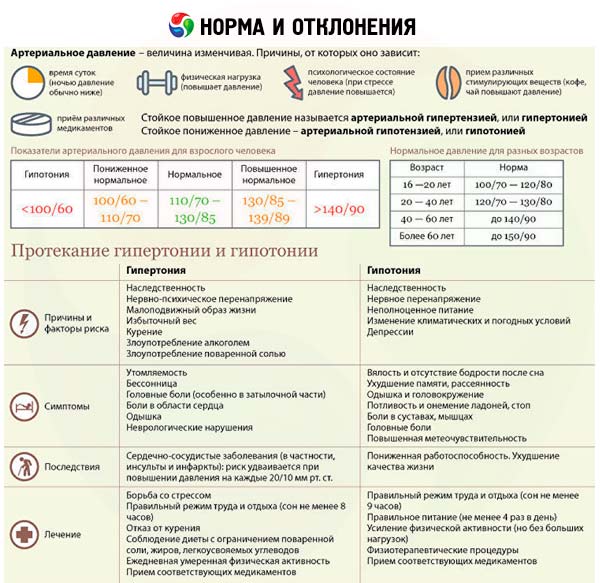
All iLive content is medically reviewed or fact checked to ensure as much factual accuracy as possible.
We have strict sourcing guidelines and only link to reputable media sites, academic research institutions and, whenever possible, medically peer reviewed studies. Note that the numbers in parentheses ([1], [2], etc.) are clickable links to these studies.
If you feel that any of our content is inaccurate, out-of-date, or otherwise questionable, please select it and press Ctrl + Enter.
Measurement of blood pressure: algorithm, norms
Medical expert of the article
Last reviewed: 04.07.2025
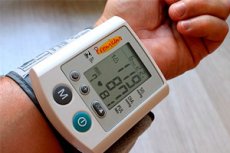
Arterial pressure is the pressure that blood exerts on the walls of blood vessels. This pressure is somewhat lower in the peripheral, smaller vessels. It fluctuates in connection with the contractile function of the heart. During systole, when the pulse wave rises, a higher, maximum, or systolic pressure is determined; during diastole, when the pulse wave falls, the pressure decreases, this is diastolic, or minimum, pressure. The difference between the maximum and minimum pressure is called pulse pressure. Arterial pressure can be approximately estimated by pulse tension: the greater the pulse tension, the higher the arterial pressure.
 [ 1 ], [ 2 ], [ 3 ], [ 4 ], [ 5 ], [ 6 ], [ 7 ], [ 8 ], [ 9 ]
[ 1 ], [ 2 ], [ 3 ], [ 4 ], [ 5 ], [ 6 ], [ 7 ], [ 8 ], [ 9 ]
Who to contact?
How to measure blood pressure?
The most accurate way to determine arterial pressure is by the blood method, inserting a needle connected to a manometer directly into a vessel. In practice, arterial pressure is usually determined using the Riva-Rocci apparatus with simultaneous listening to Korotkov tones in the cubital fossa. In 1896, S. Riva-Rocci described the apparatus used today to measure arterial pressure, which included a mercury manometer and a cuff. In 1905, the Russian doctor Nikolai Sergeevich Korotkov in St. Petersburg proposed a method for measuring arterial pressure using auscultation using the Riva-Rocci apparatus.
This method was substantiated by N. S. Korotkov in experiments on dogs. The iliac and femoral arteries were isolated and the blood flow in them was studied when a cuff was applied with simultaneous listening to the vessels below the cuff at different pressure levels in it. In this case, the same sounds were listened to and in the same order as in humans under the same conditions. This method is used to measure arterial pressure today.
A cuff at least 12 cm wide is placed on the forearm and filled with air. The air pressure in the cuff is gradually increased until it exceeds the pressure in the brachial artery. As a result, pulsation in the brachial artery stops. By releasing air from the cuff and reducing the pressure to a level slightly below systolic, we restore blood circulation in the brachial artery, which can be registered by palpation on the radial artery. The cuff is connected to a Riva-Rocci mercury manometer or a specially calibrated spring manometer, by which we evaluate the pressure in the cuff and, therefore, can evaluate the systolic pressure when determining the pulse.
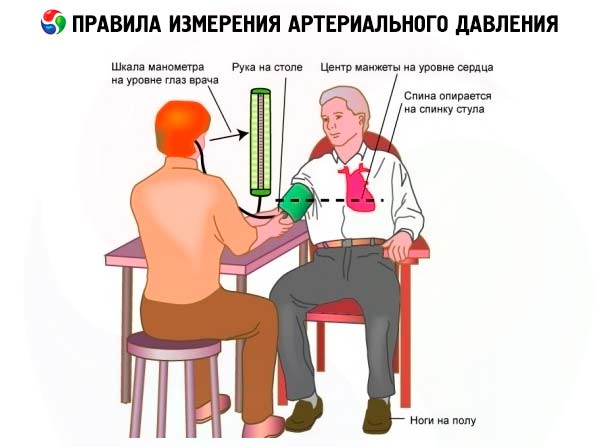
An important achievement, which ensured not only the measurement of systolic pressure, but also diastolic arterial pressure, was the auscultatory method discovered by N. S. Korotkov. It consists in the fact that when the pressure in the cuff decreases, the doctor simultaneously listens to tones appearing in the brachial artery. When the pressure in the cuff decreases slightly below the systolic, tones (phase I sounds) begin to be heard in the brachial artery, the appearance of which is associated with vibrations of the relaxed wall of an empty arterial vessel.
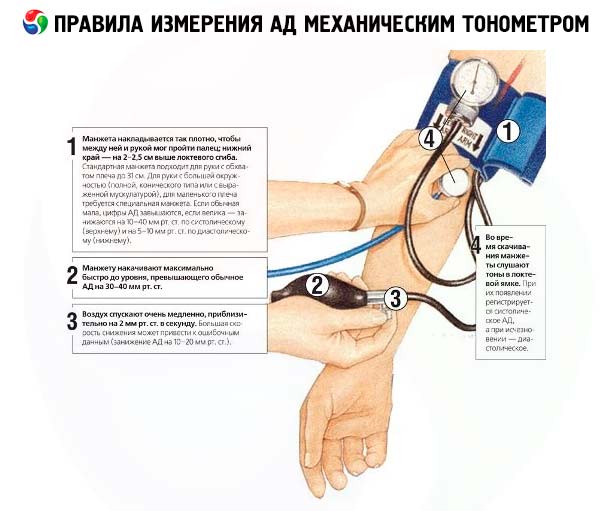
With further reduction of pressure in the cuff and listening to the brachial artery, the first phase is replaced by the second phase of noises, and then tones appear again (phase III). Then these sonorous tones of phase III suddenly weaken and soon fade away (phase IV).
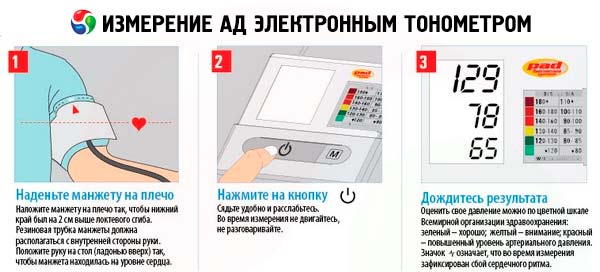
The transition from loud tones to quiet ones, i.e. from phase III to phase IV, or a rapid weakening of the volume of tones corresponds to diastolic pressure.
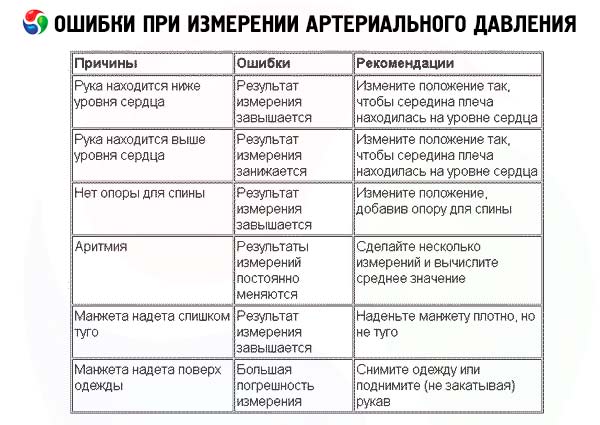
Blood pressure is measured in millimeters of mercury. Normal systolic (maximum) pressure fluctuates between 100-140 mm Hg. Diastolic (minimum) pressure is 60-80 mm Hg. In addition, there is the concept of mean arterial pressure. This is the arterial pressure that, without pulsation, could ensure the movement of blood in the vascular system at the same speed. The value of mean arterial pressure is calculated using the formula: P avg. = P diast. + 1/2 P puls.
When measuring blood pressure, the Riva-Rocci apparatus is positioned so that the zero division of the manometer is at the level of the artery being examined.
Under normal conditions, a healthy person's blood pressure is subject to significant fluctuations. Currently, it is possible to monitor the blood pressure (systolic and diastolic) for many hours and even days. The lowest blood pressure figures are observed at night. Increased pressure is noted during physical exertion, mental stress, after eating, especially stimulating drinks such as strong tea, coffee, as well as after drinking alcohol and excessive smoking. Therefore, it is important to measure blood pressure in a person being examined who is in a state of maximum rest. The lowest blood pressure is recorded in the morning, on an empty stomach, while the person is in bed, immediately after sleep. This pressure is called the main, or basal. Blood pressure is also measured on the legs. To do this, the cuff is placed on the thigh and Korotkov's tones are listened to in the popliteal fossa. Normally, blood pressure on the legs is 10 mm higher than on the arms. In patients with coarctation of the aorta, with high pressure in the arms, the pressure in the legs is significantly lower, which has diagnostic significance. Distorted indicators of the arterial pressure can be obtained with an incorrectly selected (i.e. narrower) width of the sphygmomanometer cuff. The cuff should be wider when measuring pressure in obese individuals.
It is advisable to measure blood pressure both in the lying and standing positions; in this case, a tendency towards orthostatic hypotension (a decrease in pressure in the standing position) can be detected.
On inhalation, arterial pressure decreases slightly, usually within 10 mm Hg. In conditions such as cardiac tamponade in patients with pericarditis, the decrease in pressure on inhalation exceeds 10 mm Hg.
When measuring blood pressure, it is advisable to quickly reduce the pressure in the cuff, as this allows you to get more accurate data. It is advisable to measure pressure on both arms. In this case, small differences are normally associated not with the usual true difference in pressure, but with temporary fluctuations in these indicators. It should also be borne in mind that in the period between systole and diastole, there may be a moment when the tones completely disappear. In this regard, an incorrect assessment of the true systolic pressure is possible. Usually, it is enough to measure blood pressure with an accuracy of 5 mm Hg, although some prefer to do this within 3 mm Hg. In some healthy individuals, barely audible tones of the IV-V phases are detected before the pressure in the cuff decreases to zero, which should be taken into account when recording the moment of a sharp decrease in the volume of tones, corresponding to the level of diastolic pressure.
Normal blood pressure indicators and those in pathology
The magnitude of arterial pressure depends on the cardiac output and the cardiac output, with an increase in which it increases, as well as on the condition of the peripheral vessels, i.e. the total peripheral resistance. With a tendency toward widespread spasm of the peripheral vessels or insufficient dilation of the arterioles with an increase in cardiac output, an increase in arterial pressure is observed. A tendency toward an increase in cardiac output usually occurs with an increase in the amount of circulating blood.
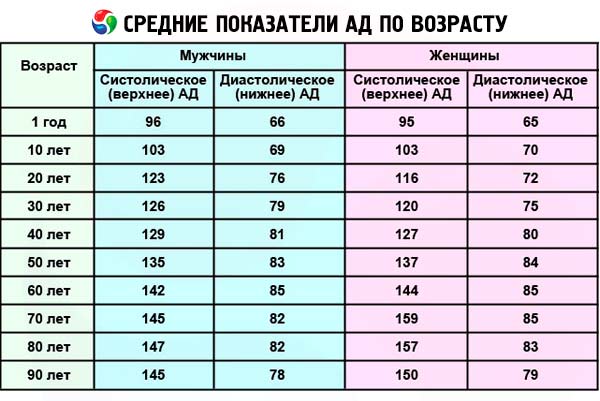
High blood pressure is observed in hypertension, kidney diseases ( glomerulonephritis, pyelonephritis, etc.), and endocrine diseases. It is possible to increase only systolic pressure, for example, in such a heart defect as aortic valve insufficiency, thyrotoxicosis.
An increase in diastolic pressure, which to a much greater extent reflects the state of the peripheral vascular bed and total peripheral resistance, also has much greater clinical significance.
Low blood pressure is observed in the so-called orthostatic hypotension (transition from a lying to a standing position), some endocrine diseases ( Addison's disease ). An important manifestation of shock in myocardial infarction, severe trauma, anaphylaxis, infection, blood loss is pronounced hypotension. It is usually based on a significant decrease in the amount of circulating blood and a decrease in cardiac output. In this case, peripheral vascular resistance may even be increased, but not to the extent that it ensures normal blood pressure.
